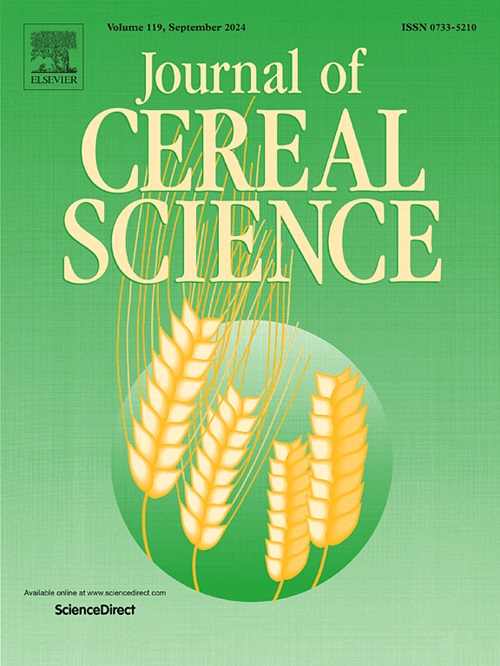Enhancing the antidiabetic and antioxidant potential of yellow sorghum via lactic acid bacteria fermentation
IF 3.7
2区 农林科学
Q2 FOOD SCIENCE & TECHNOLOGY
引用次数: 0
Abstract
Sorghum is a climate-resilient and nutritionally rich cereal with potential for enhancing food security, particularly in regions facing agro-climatic challenges. This study evaluated the effects of fermenting yellow sorghum flour with Lactobacillus reuteri on its nutritional, functional, and sensory properties. Sorghum grains were fermented with L. reuteri (108 CFU/mL) at 37 °C for 24 h. Samples were analyzed for proximate composition, antioxidant activity (DPPH, ABTS), total phenolic content, in vitro α-amylase inhibition, starch digestibility, tannin content, physicochemical and functional properties. A ready-to-cook dosa premix was formulated using fermented flour, and its sensory acceptability was assessed. Fermentation significantly enhanced protein content (9.48 ± 0.11 to 10.51 ± 0.17 %), phenolic content (190.01 ± 1.77 to 315.09 ± 2.16 mg GAE/100 g), DPPH and ABTS activity (32.04 ± 0.91 to 37.94 ± 1.18 and 38.83 ± 0.99 to 58.03 ± 1.70 mg GAE/100 g), α-amylase inhibition (30.68 ± 1.05 to 88.51 ± 1.06 %), and resistant starch (13.66 ± 1.05 to 19.35 ± 2.20 %), while reducing carbohydrate (71.53 ± 0.08 to 69.52 ± 0.14 %), tannin (328.48 ± 1.79 to 232.96 ± 4.41 mg TAE/100 g), and slowly digestible starch (46.30 ± 0.77 to 40.31 ± 2.04 %). Improvements in bulk density and color were also observed. Dosa prepared from the fermented mix showed superior sensory scores compared to the unfermented sample. Thus, the fermentation with L. reuteri improves the nutritional profile, antioxidant potential, and functionality of yellow sorghum while enhancing sensory acceptability. Future studies should explore compound-specific phenolic profiling, additional enzymatic assays, and in vivo validation to further substantiate its antidiabetic and health-promoting potential.
乳酸菌发酵提高黄高粱抗糖尿病和抗氧化能力
高粱是一种具有气候适应能力和营养丰富的谷物,具有加强粮食安全的潜力,特别是在面临农业气候挑战的地区。本研究评价了用罗伊氏乳杆菌发酵黄高粱粉对其营养、功能和感官特性的影响。采用罗伊氏乳杆菌(L. reuteri) (108 CFU/mL)在37℃下发酵高粱籽粒24 h,分析样品的近似组成、抗氧化活性(DPPH、ABTS)、总酚含量、体外α-淀粉酶抑制作用、淀粉消化率、单宁含量、理化性质和功能特性。用发酵面粉配制了一种即食印度薄饼预混料,并对其感官可接受性进行了评估。发酵显著提高蛋白质含量(9.48±0.11,10.51±0.17%)、酚醛含量(190.01±1.77,315.09±2.16毫克GAE / 100 g), DPPH和abt活动(32.04±0.91,37.94±1.18,38.83±0.99,58.03±1.70毫克GAE / 100 g),α淀粉酶抑制(30.68±1.05,88.51±1.06%)和抗性淀粉(13.66±1.05,19.35±2.20%),同时减少碳水化合物(71.53±0.08,69.52±0.14%),丹宁(TAE 328.48±1.79,232.96±4.41毫克/ 100克),慢消化淀粉(46.30±0.77 ~ 40.31±2.04%)。还观察到体积密度和颜色的改善。与未发酵的样品相比,由发酵混合物制备的Dosa具有优越的感官得分。因此,罗伊氏乳杆菌发酵改善了黄高粱的营养成分、抗氧化潜力和功能,同时提高了感官接受度。未来的研究应该探索化合物特异性酚类分析、额外的酶分析和体内验证,以进一步证实其抗糖尿病和促进健康的潜力。
本文章由计算机程序翻译,如有差异,请以英文原文为准。
求助全文
约1分钟内获得全文
求助全文
来源期刊

Journal of Cereal Science
工程技术-食品科技
CiteScore
7.80
自引率
2.60%
发文量
163
审稿时长
38 days
期刊介绍:
The Journal of Cereal Science was established in 1983 to provide an International forum for the publication of original research papers of high standing covering all aspects of cereal science related to the functional and nutritional quality of cereal grains (true cereals - members of the Poaceae family and starchy pseudocereals - members of the Amaranthaceae, Chenopodiaceae and Polygonaceae families) and their products, in relation to the cereals used. The journal also publishes concise and critical review articles appraising the status and future directions of specific areas of cereal science and short communications that present news of important advances in research. The journal aims at topicality and at providing comprehensive coverage of progress in the field.
 求助内容:
求助内容: 应助结果提醒方式:
应助结果提醒方式:


